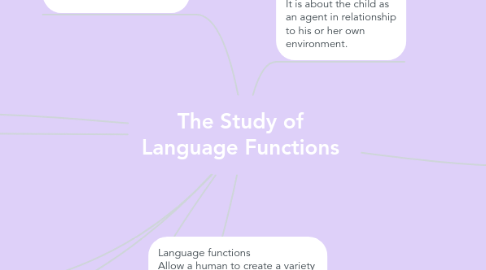The Study of Language Functions
作者:Stefany Malkun Santana

1. Language functions Allow a human to create a variety of cultural identities unique to the products of the human language learning system such as economic or political systems and rule-governed societies.
2. SOCIAL INTENTIONS It is the way the child relates his world to the environment that surrounds him, helping him to create more structured ideas with the help of the social environment
3. PREOPERATIONAL COGNITION It talks about how the child interacts with society through a more structured language and expressing his own opinion,
4. Extended semantic relationship It is based on a clearer and more specific communication of what the child is talking about
5. CONCRETE COGNITION This type of thinkingPioneers expresses how others do their actions; the child no longer has to be central to the thinking.
6. SPEECH ACTS Includes the rules for the context, verbal and language function speech acts non-verbal characteristics of the speaker’s utterance, and the effects on the listener
7. EXPANDED SPEECH ACTS As speakers engage in discourse, the language functions of the speech acts generate more and more meaning for the speakers and the listeners. The complexity of the of language generates more than simple back and forth function comments.
8. Semantic relationship It is about the child as an agent in relationship to his or her own environment.
9. EXPANDED LANGUAGE FUNCTIONS It allows to develop critical thinking and help solve problems.
9.1. DISPLACEMENT Ideas are separate from the physical existence of a person, action, or object.
9.2. SEMANTICITY Concepts increase in complexity from the overlapping and layering of meaning.
9.3. PRODUCTIVITY Concepts mean similar ideas whether they are in spoken or written form.
9.4. REDUNDANCY Concepts increase in meaning to the point where they must become a new concept.


